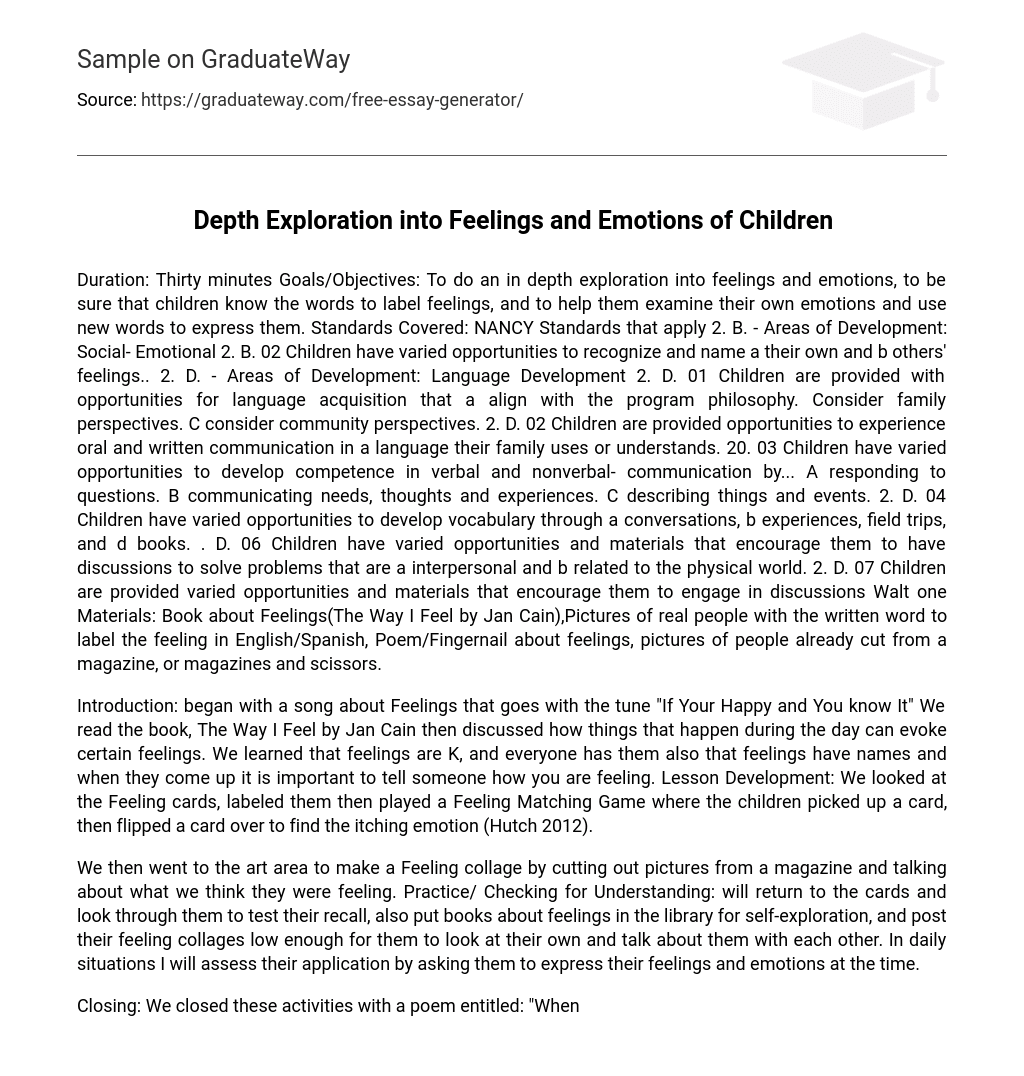Introduction
Began with a song about Feelings that goes with the tune “If Your Happy and You know It” We read the book, The Way I Feel by Jan Cain then discussed how things that happen during the day can evoke certain feelings. We learned that feelings are K, and everyone has them also that feelings have names and when they come up it is important to tell someone how you are feeling. Lesson Development: We looked at the Feeling cards, labeled them then played a Feeling Matching Game where the children picked up a card, then flipped a card over to find the itching emotion (Hutch 2012).
We then went to the art area to make a Feeling collage by cutting out pictures from a magazine and talking about what we think they were feeling. Practice/ Checking for Understanding: will return to the cards and look through them to test their recall, also put books about feelings in the library for self-exploration, and post their feeling collages low enough for them to look at their own and talk about them with each other. In daily situations I will assess their application by asking them to express their feelings and emotions at the time.
Closing
We closed these activities with a poem entitled: “When I Am” When I am sad, I want to cry. When I am proud, I want to fly. When I am curious, I want to know. When I am impatient, I want to go. When I am bored, want to play. When I am happy, I smile all day. When I am shy, I want to hide. When I’m depressed, I stay inside. When I am puzzled, I want to shrug. When I am loving, I kiss and hug.
Personal Reflection
Feelings are an abstract concept that takes children time and experience to understand and deal with in a socially acceptable manner. These activities have revered to give the children in my class the foundation and the words needed to express their feelings. I can also use this strategy to remind children that emotions are okay, that words have power, and they now have the words.
Young children need to understand that feelings are a part of life for all human beings. Caregivers are responsible to help children understand that their feelings are valid and very okay to have. Sometimes we give children mixed messages regarding this abstract concept for example if a child is fussy or crying we will say “be quiet there’s nothing wrong with you” when they may be tired or hungry.
Sometimes we have to explain to children that you cried to get what you wanted when you were a baby because you did not have words; now that you know how to talk, you can use words to tell people what you need. The objectives of this lesson plan are to introduce children to the vocabulary associated with the feelings they have so that with time and experience they will be able to express their own feelings and understand how another person is feeling. This is accomplished through the use of literature, music, rhythmic wording, and visualization of real people expressing emotions.
This plan aligns directly with the NANCY standards for language development which asks an educator to provide experiences for all children to acquire language naturally through interaction with adults and peers, through verbal and written means, through literature and storytelling, songs and finger plays, and through stimulating materials in a rich learning environment (NANCY, 2010). These standards demonstrate an understanding of the functions in which children acquire language. They help you to provide experiences for children right where they are developmentally.
You can use the visual materials and provide the language and vocabulary for nonverbal children like infants, for children in the silent phase of learning a second language or for special needs children, or you can allow more verbal children to give the vocabulary to you. Exposure to written language is also included as feeling cards and books are labeled with the word that represents the emotion. Books in languages other than English provide an opportunity for second language learners to hear and see the words in their native language as well (Piper, 2012).





